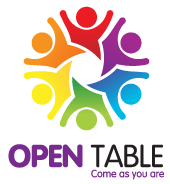LGBT+ History Month - Meet Jean-Michel Basquiat, anti-racist artist and social commentator
FEBRUARY is LGBT+ History Month, an annual celebration of lesbian, gay, bisexual, trans & non-binary history.
In the UK it is celebrated in February each year, to coincide with the 2003 abolition of Section 28, a law passed in 1988 by the UK government that stopped councils and schools in England & Wales ‘promoting the teaching of the acceptability of homosexuality as a pretended family relationship.’
The aim is to be an exciting, informative and celebratory month, to educate out prejudice and make LGBT+ people, in all their rich diversity, visible. This year's theme is ‘Politics In Art’. LGBT+ History Month is spotlighting five people to illustrate this theme. Here is the third:
Jean-Michel Basquiat
22nd December 1960 – 12th August 1988
Jean-Michel Basquiat was born in Brooklyn, New York City. His father was Haitian and his mother was Puerto Rican. His cultural heritage provided inspiration and he would often incorporate Spanish words into his artworks.
When he was eight years old, he was hit by a car. His mother bought a copy of Gray’s Anatomy for him to read while he was recovering, and this provided inspiration for his art later in life, as he began copying diagrams of chemical compounds. He also named his band Gray which referenced the book.
Jean-Michel’s mother suffered from mental illness. Due to her instability and family unrest, he ran away from home at 15. He slept on park benches and was arrested, then returned to the care of his father within a week.
Basquiat did not have a formal art education. His father would take him to local art museums from a young age. Neither did he go to art school - he learnt from going through art galleries and was inspired by music his father played
He started as a graffiti artist using the tag ‘SAMO’ (shorthand for ‘same old s*** ‘) in 1978. He created this with high school friend Al Diaz. They started spray painting graffiti on buildings in Lower Manhattan. In 1980, they fell out and Basquiat wrote ‘SAMO IS DEAD’ around lower Manhattan. Diaz resurrected the SAMO after Donald Trump’s 2016 presidential election victory. Basquiat sold his first painting, Cadillac Moon (1981), to Debbie Harry, lead singer of punk band Blondie, for $200.
His girlfriend, Suzanne Mallouk, who financially supported him as a waitress during this period later described his sexuality as:
...not monochromatic. It did not rely on visual stimulation, such as a pretty girl. It was a very rich multichromatic sexuality. He was attracted to people for all different reasons. They could be boys, girls, thin, fat, pretty, ugly. It was, I think, driven by intelligence. He was attracted to intelligence more than anything, and to pain.
In 1982 he also dated then-unknown singer Madonna.
His signature artistic motif, the crown, had three peaks symbolising his three royal lineages: the poet, the musician and the great boxing champion. In his art, he decorated historically prominent black figures with crowns and halos.
At age 22, he was the youngest to exhibit at the Whitney Biennial. He was deeply affected by the death of Michael Stewart, an aspiring black artist in the downtown club scene, killed by police in September 1983. He painted Defacement (The Death of Michael Stewart) (1983) in response to the incident.
He died on 12th August 1988 at age 27 years old, of a heroin overdose at his home.
Basquiat used social commentary in his paintings as a tool for self-examination, and for identifying with his experiences in the Black community of his time, as well as attacking power structures and systems of racism. His visual style was acutely political and direct in his criticism of colonialism and his support for class struggle.


